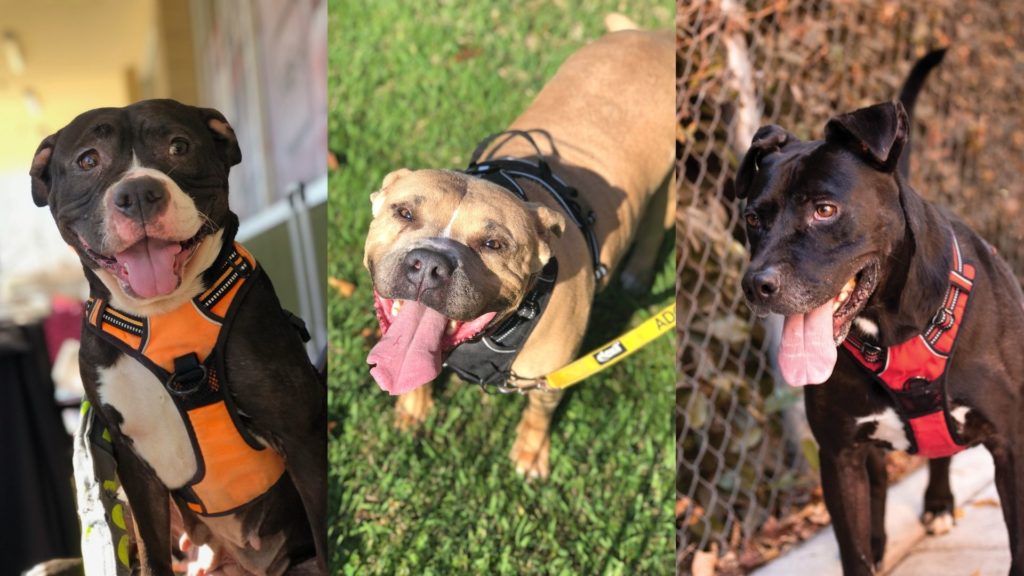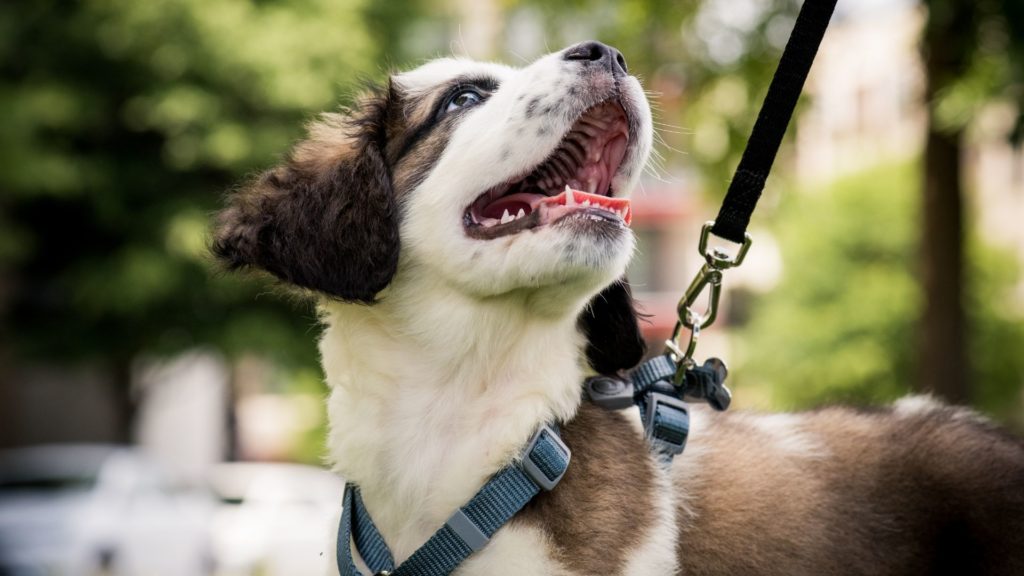Dog Walking Tips
Walking your dog is a great way to get them outdoors and help them stay active. Being able to walk your dog safely is also important if you want to take them out on outings or in public. However, sometimes walking your dog isn’t as easy as putting on their leash and heading out, especially if you are still training your dog how to walk on leash. Your dog may pull, or they may refuse to walk, or they lunge at any distraction. Here are some tips and advice from our dog trainer in training, Mariah, to help you on your journey towards smooth walking of your canine companion(s)!
-
Identify the type of ‘walker’ your dog is and gather the correct tools to help you.
A dog who pulls is different from a dog who freezes when on leash. Small dogs may require different tools than large dogs. Mariah recommends using harnesses for better control. “With a dog who pulls, you’ll want a sturdy harness with a metal front clip. With small dogs who are insecure, finding a snug harness that wraps around their body will help to give them a sense of security.” It’s all about trial and error, so don’t be afraid to try out different tools. Having treats on hand is also great!

There are different types of harnesses, so be sure to try different ones until you find one that works!
-
Practice control and recalling your dog’s attention.
Being able to control and gain your dog’s attention is super important. This is especially important for our big dog owners who probably won’t be able to just pick up their dogs (like little dogs) in the event that something goes wrong during a walk.
If your dog is also a reactive dog or easily distracted, it’s also important to understand that going on a walk will be exposing your dog to many new stimuli and getting their impulse under control will take time. Please be patient with your dog and yourself!
-
Take baby steps!
If your dog has never been on a walk before, or if they are reactive, take baby steps at home before walking them out in public. “Get them used to their harness being put on and off,” Mariah said. “You can walk them up and down your hallway and when they’re comfortable with that, take the next step and walk in your yard, and slowly move up. You want to first practice in a controlled environment.” As your dog progresses, you can then slowly introduce them to walking in a more public environment.
-
Be patient. It takes time.
Just like any other training, be patient. Some dogs may pick it up quicker while some will take longer. If you also just recently adopted the dog from a local shelter or rescue, your dog may also still be acclimating to their new home, so don’t feel rushed if they’re not quick to pick up on walking alongside you.

It’s important to be patient and be consistent if you are training your dog on how to walk properly with you. Don’t be discouraged if you fail or have to start over. We hope the advice above will be able to assist you!
Mariah Prudhume is a Dog Care Associate here at Valley Animal Center. She’s been with Valley Animal Center since June of 2021 but has been in the animal shelter field for about seven years. She’s always had a passion for animals for as long as she can remember. She would take strays home constantly as a kid to care for. She believes taking care of animals is what she was born for and she knows she will continue to work with animals for the rest of her life. Her current goals are to grow her skills in dog training, educate the public on the importance of spaying and neutering their pets to lessen the stray population in our community, and teach proper communication and care between owners and their pets. In her free time, she loves to foster bottle babies.
Valley Animal Center is dedicated to serving animal companions in the Central Valley and beyond. Our mission is to unite dogs and cats with loving people. We believe every animal deserves a loving family and furever home. Through our membership-based dog park and our low-cost clinic, we also provide local and accessible resources and services to the animal lovers and pet communities while rescuing animals in need from local animal control agencies. Donate to support our endless mission.
